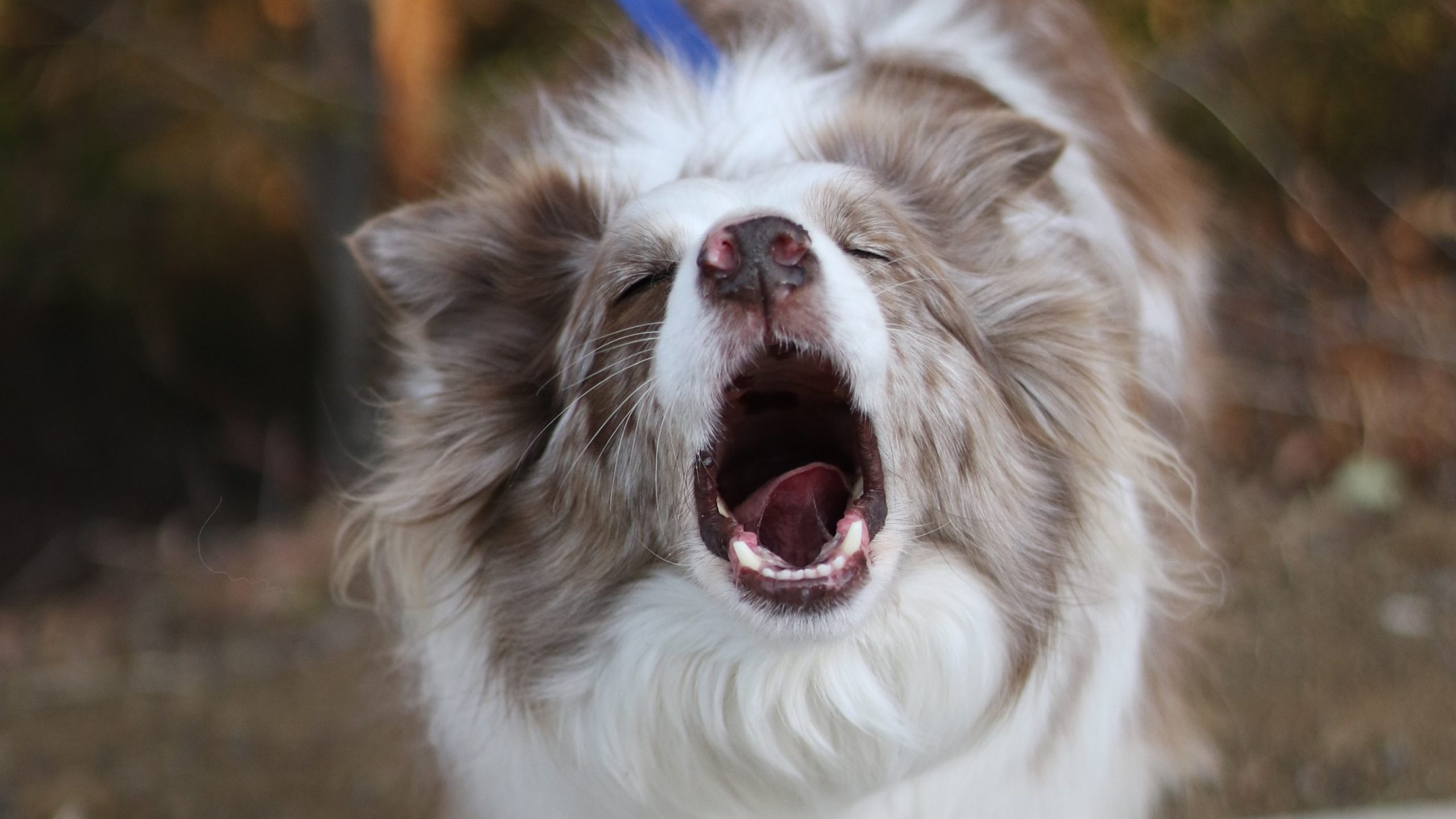What is a Reactive Dog?
Simply put, a reactive dog is a dog that “reacts” (usually lunging, barking or growling) to everyday encounters with strange dogs or people, or even strange objects. Reactivity in dogs can have many causes, but the vast majority of reactive dogs are either fearful or frustrated.
Fear-Based Reactivity
In a fearful dog, they might feel the only way to gain distance from the scary dog is to look and sound scary so they will go away, it’s the only way the dog knows how to feel safe. Because dogs communicate a lot through body language, and people are generally poor at reading dog body language, dogs sometimes learn that the human isn’t going to do anything about the big scary thing for them and so they learn they need to react in order to get any space. They can even learn only to do this with one person in a family, and people often assume this is the dog being protective of that person.
Frustration-Based Reactivity aka Barrier Frustration
For a frustrated dog, the motive is the opposite, they want to go say hello but they can’t because either they are on lead or there’s a fence in the way. It’s important to note that if a dog seems fine off-lead but is reactive on-lead, this doesn’t necessarily mean they have barrier frustration. A dog that’s off-lead is more free to display “don’t come near me” body language as well as to make it’s own space.
To understand why a dog might react this way when frustrated, we can look at how people react when something they enjoy stops being accessible to them. Take a phone for example: If your phone screen freezes, there are different ways some people might react. One person may be a little annoyed but wait patiently for their phone to reboot, whereas another person might not be able to deal with the frustration and get angry or even throw their phone! Dogs have the same range of responses as humans do.
Reactive Dog Nomenclature
React: Lunge, bark, growl, bite.
Triggers: Things a dog might react to, or things that a dog finds stressful
Threshold: The distance a dog needs to be from the trigger to be able to not react.
Under-Threshold: The dog is not reacting, is able to walk on a loose lead and take treats.
Over-Threshold: The dog is stressed about the trigger, they may be pulling, stop and staring, lunging or barking.
Working with a Reactive Dog
It’s very important to try and keep a reactive dog under threshold as much as possible. Every time they practice the behaviour, they get better at it, so we need to set them up to be successful. They also can’t learn while over threshold. While in this state, their sympathetic nervous system is doing the work and thinking part of their brain has taken a back seat.
If your dog is over-threshold, the only thing to do is to increase the distance from the trigger to bring them back under threshold as quickly as possible. Once your dog can look at you and take food, a quick scatter of food on the ground to get their head down and encourage them to sniff can help relax them a little.
People sometimes avoid reactive dog training for fear that their dog will react, but a good trainer will be keeping your dog under threshold as much as possible. A reactive dog that never reacts in training is a dog that has been well managed and the sign of a good trainer!
We need to avoid punishing a dog for reacting, as at best it’s only going to make them shut down and feel worse about the trigger, and at worst can cause your dog to see their handler as something to fear when they see a trigger, which can cause them to turn around and bite the handler.
Reactivity isn’t usually something that can completely and easily be cured. Just like anxiety in people, it’s something that we teach them to deal with more healthily, while also adjusting our expectations of what the dog may find enjoyable (eg: A fearful dog is likely to hate going to the dog park, so that shouldn’t necessarily be our goal).
